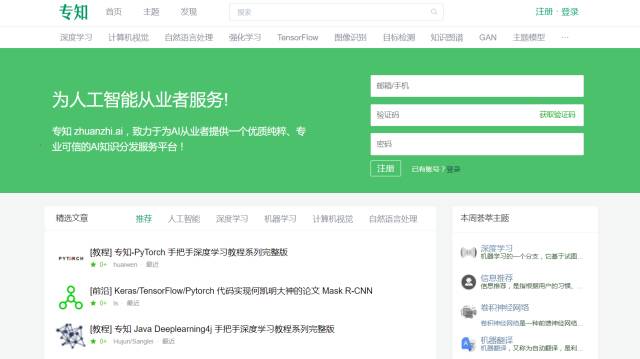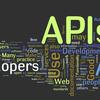【干货】使用TensorFlow官方Java API调用TensorFlow模型(附代码)
【导读】随着TensorFlow的普及,越来越多的行业希望将Github中大量已有的TensorFlow代码和模型集成到自己的业务系统中,如何在常见的编程语言(Java、NodeJS等)中使用TensorFlow成为了一个比较常见的问题。专知成员Hujun给大家详细介绍了在Java中使用TensorFlow的两种方法,并着重介绍如何用TensorFlow官方Java API调用已有TensorFlow模型的方法。
专知成员Hujun在以前就写过TensorFlow 1.4 Eager Execution系列教程,欢迎查看。
完整代码可以参见专知Github链接:
https://github.com/ZhuanZhiCode
1.Java调用TensorFlow的两种方法
使用Java调用TensorFlow大致有两种方法:
直接使用TensorFlow官方API调用训练好的pb模型:
https://www.tensorflow.org/api_docs/java/reference/org/tensorflow/package-summary
(推荐) 使用KerasServer托管TensorFlow/Keras代码及模型:
https://github.com/CrawlScript/KerasServer
虽然使用TensorFlow官方Java API可以直接对接训练好的pb模型,但在实际使用中,依然存在着与跨语种对接相关的繁琐代码。例如虽然已有使用Python编写好的基于TensorFlow的文本分类代码,但TensorFlow Java API的输入需要是量化的文本,这样我们又需要用Java重新实现在Python代码中已经实现的分词、从字符串到索引的转换等预处理操作(这些操作同时依赖于Python代码依赖的单词表等数据)。另外,由于Java没有numpy支持,在构建多维数组作为输入时,使用的依然是类似循环的操作,非常繁琐。
KerasServer支持restful交互,因此可以支持用任何程序语言调用TensorFlow/ Keras。由于KerasServer的服务端提供Python API, 因此可以直接将已有的TensorFlow/Keras Python代码和模型转换为KerasServer API,供Java/c/c++/C#/ Python/ NodeJS/Browser Javascript等调用,而不需要再其他语种中进行繁琐的数据预处理操作。
例如,Java可直接将需要分类的文本数据提交给KerasServer,KerasServer可利用已有的Python代码对字符串进行分词、预处理等操作。
本教程介绍如何用TensorFlow官方Java API调用TensorFlow(Python)训练好的模型。教程的代码可在专知的Github项目中找到:
https://github.com/ZhuanZhiCode/TensorFlow-Java-Examples
2.依赖库
(1)Python依赖
TensorFlow
pip install tf-nightly
(2)Java依赖
本教程使用的是TensorFlow官方提供了Java接口,因此我们需要导入下面的Maven依赖:
<dependency>
<groupId>org.tensorflow</groupId>
<artifactId>tensorflow</artifactId>
<version>1.5.0</version>
</dependency>
此外,还有一些工具类依赖:
<dependency>
<groupId>commons-io</groupId>
<artifactId>commons-io</artifactId>
<version>2.6</version>
</dependency>
3.保存pb模型
下面的代码中,x是图的输入,z是图的输出。在代码的最后,调用tf.graph_util.convert_variables_to_constants 将图进行转换,最后将图保存为模型文件(pb)。
#coding=utf-8
import tensorflow as tf
# 定义图
x = tf.placeholder(tf.float32, name="x")
y = tf.get_variable("y", initializer=10.0)
z = tf.log(x + y, name="z")
with tf.Session() as sess:
sess.run(tf.global_variables_initializer())
# 进行一些训练代码,此处省略
# xxxxxxxxxxxx
# 显示图中的节点
print([n.name for n in sess.graph.as_graph_def().node])
frozen_graph_def = tf.graph_util.convert_variables_to_constants(
sess,
sess.graph_def,
output_node_names=["z"])
# 保存图为pb文件
with open('model.pb', 'wb') as f:
f.write(frozen_graph_def.SerializeToString())
4.在Java中调用TensorFlow的图(pb模型)
模型的执行与Python类似,依然是导入图,建立Session,指定输入(feed)和输出(fetch)。
import org.apache.commons.io.IOUtils;
import org.tensorflow.Graph;
import org.tensorflow.Session;
import org.tensorflow.Tensor;
import java.io.FileInputStream;
import java.io.IOException;
public class DemoImportGraph {
public static void main(String[] args) throws IOException {
try (Graph graph = new Graph()) {
//导入图
byte[] graphBytes = IOUtils.toByteArray(new
FileInputStream("model.pb"));
graph.importGraphDef(graphBytes);
//根据图建立Session
try(Session session = new Session(graph)){
//相当于TensorFlow Python中的sess.run(z,
feed_dict = {'x': 10.0})
float z = session.runner()
.feed("x", Tensor.create(10.0f))
.fetch("z").run().get(0).floatValue();
System.out.println("z = " + z);
}
}
}
}
运行结果:
z = 2.9957323
完整代码链接:
https://github.com/ZhuanZhiCode/TensorFlow-Java-Examples
-END-
专 · 知
人工智能领域主题知识资料查看获取:【专知荟萃】人工智能领域26个主题知识资料全集(入门/进阶/论文/综述/视频/专家等)
请PC登录www.zhuanzhi.ai或者点击阅读原文,注册登录专知,获取更多AI知识资料!
请扫一扫如下二维码关注我们的公众号,获取人工智能的专业知识!
请加专知小助手微信(Rancho_Fang),加入专知主题人工智能群交流!加入专知主题群(请备注主题类型:AI、NLP、CV、 KG等)交流~
点击“阅读原文”,使用专知





